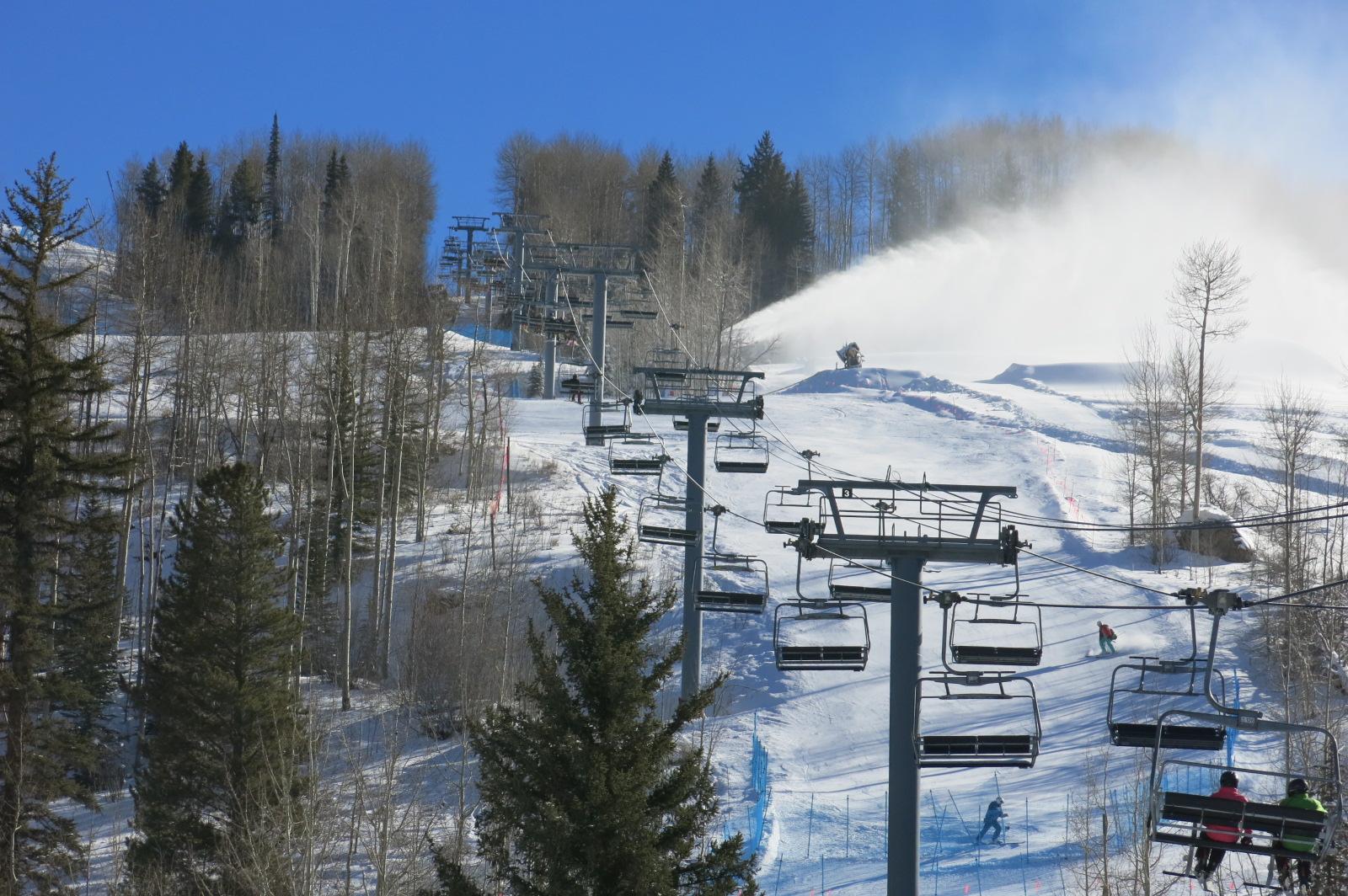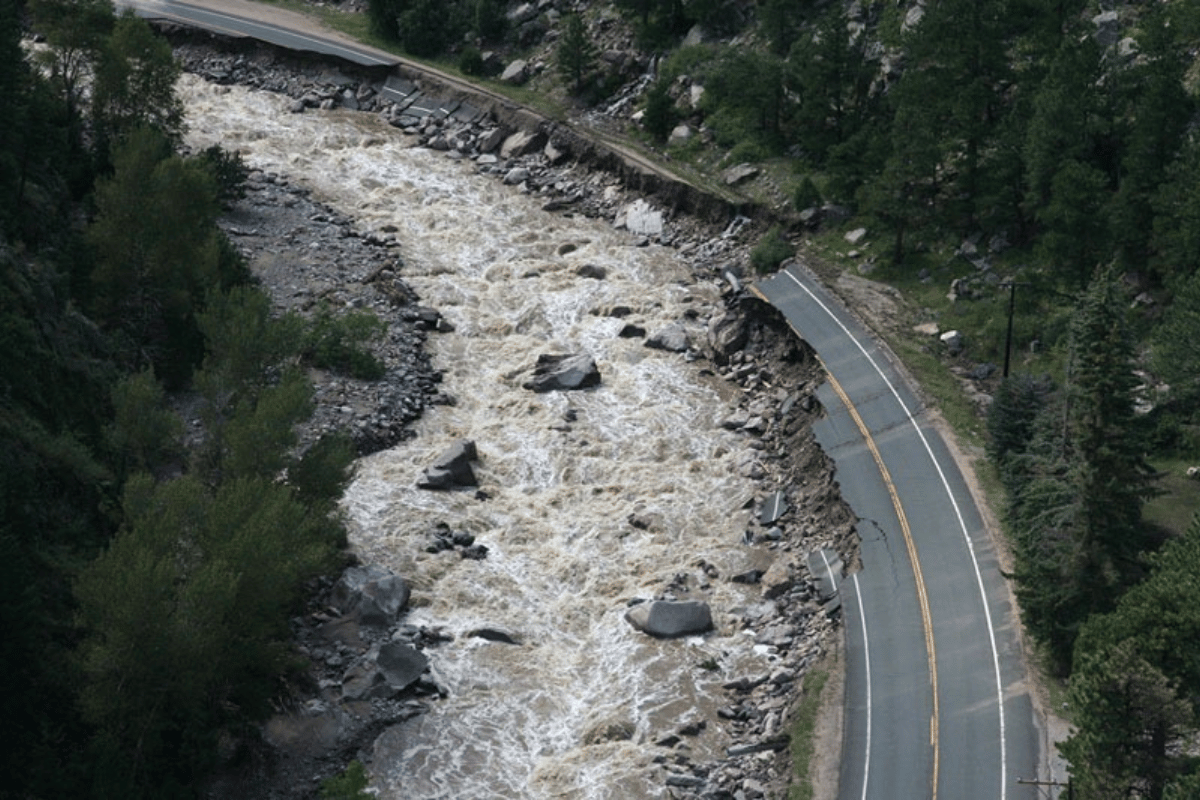

From powderhounds to Colorado’s water managers, the new year has brought worry. The record-low snowpack in parts of the Rocky Mountains is the culprit. Snowfall at the end of 2017 in Beaver Creek, Vail and Park City, Utah was the lowest in more than 30 years.
Damon Miller of Denver has skied in the state for decades and laments that runs have exposed rocks and trees. He usually gets his first run in before Christmas. Not this season though. He just got in his first turns of the season, mid-January, at Keystone.
“Even when you look around at the mountains and trees around here it’s obviously low coverage compared to what it normally is,” he said. “It’s pretty apparent.”
- Skimpy Snow Could Spell Trouble For The Ski Industry Next Year
- Colorado's Skier Numbers Find No Joy In Warm, Dry Winter
Colorado statewide snowpack is at 60 percent of average, which means that this year, snowmaking is a necessity for ski areas. The overall lack of snow has also been hard on the box office. Vail Resorts, Keystone’s owner, reported a 10.8 percent drop in visits across its North American resorts and Canada. Lift ticket revenue was up slightly thanks to pre-ski season Epic Pass sales.
The worry for weather watchers is that Colorado recorded its third warmest year on record in 2017. Last November was the state’s warmest ever for that calendar month.
Even where Colorado saw significant snow, Russ Schumacher, the state climatologist, said, “it’s still remained relatively warm.”
Schumacher and others acknowledge the role climate change and those warmer temperatures will play across the West. The thing that’s more difficult to predict is how winter snowfall might change. Right now, Schumacher said some spots near the Continental Divide have near average snowpack. But move farther south to the Gunnison River basin and there are places setting new records for lack of snow.
Jeff Lukas, with the Western Water Assessment, is watching not just snowpack levels but the water in that snowpack.
“Your senses are triggered,” he said. “But you don’t push the alarm bell yet….”
For him snow is like a bank account for the arid West. Every year water managers capture snow melt in reservoirs. If the snow starts running off early or evaporates in warm weather or there’s not enough of it, then Lukas’ alarm bells will start going off.
For the moment, he’s less than plussed about the situation.
“It’s unlikely that we’ll get back up to average over the next three to four months and end up with a peak snowpack that’s near normal. So basically all of our potential futures are below average. And the question is, how far below?”
Nineteen other states depend on water from river basins that depend on Colorado’s snowpack. The Colorado Basin River Forecast Center predicts water levels significantly below average for 2018 — And that’s prompting more questions.
In the past few months, the drought has deepened across Colorado, Utah, New Mexico and Arizona. If it continues through the winter, it’ll be another factor that worries water managers. Increased drought also raised the specter of dust The more dust there is on snow, Jeff Derry of the Center for Snow and Avalanche pointed out, the faster and earlier it can melt.

“That could really affect spring conditions in terms of the snowpack melting earlier in the season and must faster than it normally would have otherwise,” he said.
So far, Derry has seen minimal dust deposits.
Back on the slopes at Keystone, skier Damon Miller has a bit of parting advice for others who haven’t yet gone out this season. Stay out of the bare spots. If you hit a few rocks, you’ll have to get your skis tuned.
“But if you stay on the groomers it’s alright,” he said.
There may be something in the air for skier anxiety, more snow is in the forecast for many Colorado resorts. It’s a trend weather watchers are hopeful will continue to help the snowpack recover.









